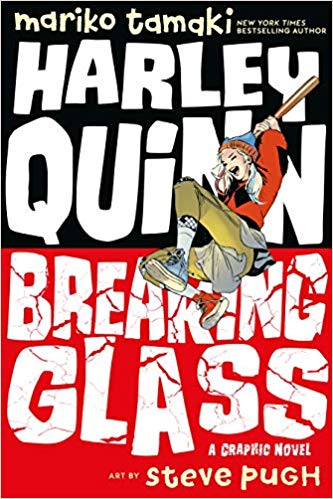Thursday Comics Hangover: One Joker shy of a full deck

I'm sorry to report that the Joker movie is a dreadful affair. Joaquin Phoenix's acting is very good — though I've seen him do better in The Master and Her — and the supporting cast is excellent. But the movie doesn't really have anything to say. It's just a Joker origin story, pulled out of a comic book setting and planted smack in the middle of a 1980s Scorsese New York City. "Serious" bad stuff happens, and the movie is relentless in its repetition of bleak events. Aside from one very funny piece of physical comedy, there's no punchline here. It's not clever or, really, very funny.
I just don't get why the filmmakers decided to juxtapose the character of the Joker against Scorsese's New York. There's not really any friction there. Now, if they plopped the Joker into the middle of a romantic comedy, or a World War II movie, there might have been enough friction to make a reimagining feel worthwhile.
And I have one great example in mind: Last month, DC Comics published a Harley Quinn comic called Breaking Glass that was written by bestselling young adult comics author Mariko Tamaki and illustrated by veteran comics artist Steve Pugh. It begins as a straightforward young adult story — Harley is a new girl at a foster home who has to learn how to fit in at high school — and it ends with a bold reimagining of the Batman characters for a new generation.
First, let me just say that Pugh, who has been drawing beautiful horror comics since the 1980s, is perhaps doing the best work of his life in Broken Glass. His work has always carried an uncomfortable realism with it, but here the discomfort has been leached away. It's a realistic style that's given just enough comic-book wildness through Pugh's monochromatic coloring. Each page has its own palette — one page is tinted in stately browns, the next is a bright, vivid red — that reflects its main character's discombobulated inner emotional state.
And about that main character: aside from her original appearances in the 1990s Batman animated series I've never been too much of a fan of Harley Quinn. Too many male comics writers handled the abuse aspect of her relationship with the Joker too poorly, making her a toxic role model for men and women alike.
But in Breaking Glass, Tamaki handles Quinn's psychological issues with great care and empathy. Quinn finds a community in a drag troupe, and she learns to love herself in her own unique way. And her relationship with the Joker — who is thankfully presented here as an alter ego and not a demented omnipotent force of chaos — has some twisty depth to it.
I wouldn't give Breaking Glass to any very young readers. There's swearing and violence and some emotional complexity that middle-grade readers might not be able to handle. But for someone in their mid-to-late teens who can handle the occasional R-rated movie, Breaking Glass is the rare reimagining of the Batman story that doesn't just put everyone in a new costume and tell the same tired stories all over again.
Tamaki introduces the Batman universe to a young adult fiction framework and then proves that she has enough ideas to stretch on for six or seven more books in this style. Unlike the been-there-seen-that vibe of The Joker, I want to see more of this world as soon as possible.